On the eastern side of Hokkaido, in the interior, lies three large lakes; lake Akan, Kussharo and Mashu, forming the Akan national park. And right in between those lakes lies the Kussharo Genya youth hostel, which happens to be run by a friend of Ritsuko's and his family.
You may expect a largely depopulated wilderness area akin to Sarek or Abisko national parks in Sweden, but that is not quite the case. Hokkaido is just too densely populated to really support large swaths of wilderness, and Akan is criss-crossed by roads and dotted with farms and fields, vacation homes, guest lodgings and other facilities. That said, the area is very beautiful, roads and all, and a welcome change from Osaka. In a way, the landscape reminds me a bit of northern Dalarna in Sweden, with its mountains and fields.
Of course, any similarity to Scandinavia is superficial. The Scandic mountain range is old and geologically inactive; Hokkaido, like most of Japan, is young and still very active, with hot springs, gas vents, earthquakes and calderas. New volcanic eruptions are possible and likely inevitable. The mountains and the three lakes are all the result of relatively recent seismic activity.
The trip to the area is by a small two-car, then one-car train (the kind called "rälsbuss", "rail bus" in Swedish). From what I understand the tourist high season is in summer, with swimming, canoeing, bicycling and general frolicking around the lakes; but even in the dead of winter was the train pretty much packed with people going to Akan or towards Shiretoko national park on the north-eastern tip of the island. JR also runs a couple of old-style tourist trains along the coast, a diesel train and an old steam train; on the way back we took the green-painted Norokko train, with wood stove-heated cars and amazing view of the coastline. Fun, and arguably more comfortable than the rather stuffed rail bus.
Our reason for choosing Akan wasn't the area itself, beautiful as it is, but that one of Ritsuko's friends runs a youth hostel there with his family. The Kussharo Genya hostel (more information on the Japanese site) is located right in the middle of the park, in between the three lakes. It is a fairly original octagonal design, with a round main room, major areas (kitchen, dining room, baths and so on) radiating out on the first floor, and the guest rooms spread out around the second. The place actually works more like a wilderness hotel than a normal hostel, offering various tours and guided sightseeing. Also unlike most normal hostels in Europe there is no guest kitchen but breakfast is included and you can order dinner. The dinner, by the way, is a multi-course menu I can't recommend warmly enough. Kazuhito is a trained chef from Osaka and worked in traditional Kyoto restaurants before he relocating in Sapporo and on to Akan to build the hostel. As a result the food, as you can imagine, is excellent.

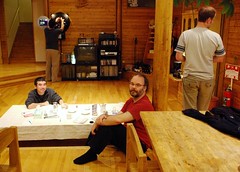
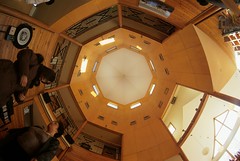
The hostel interior, with its high-ceilinged main room. Yes, that is me relaxing after dinner in the center, and Ritsuko is in both the left and right images.
During winter there's plenty of cross-country skiing of course (the hostel will happily lend you gear); you can go for outdoor hot spring baths; and there's tours to the lakes and other scenic areas. But if you're lucky with the weather - and you're likely to at this time of year - the single most enjoyable thing you can do is simply to go for long walks in the snow-white sparkly landscape and soak in the hot-spring bath in the hostel. The area is criss-crossed with small, well-maintained roads and the nearest lake, Kussharo, is only a few kilometers away by foot. We went on a car tour to Mashu and Kussharo lakes the first day, but apart from that we simply spent our time enjoying the winter weather, not doing anything at all.
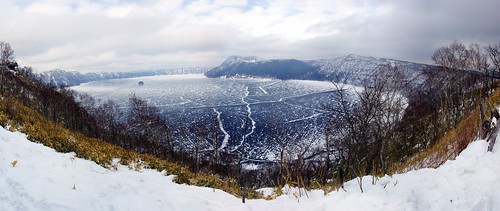
Lake Mashu. It's a caldera with steep cliffs and no natural beaches. And as it's a protected area no construction is allowed so there is no access to the lake itself; the closest you get is two view points around the lake.

Kussharo lake is easier to access than lake Mashu. It's still volcanic, though; the lack of ice near the shore is due to hot water and gases percolating up from beneath the sandy bottom around the beach. The swans evidently appreciate the warm water a great deal too.
The flights both from and to Osaka were near-full and the airport was crowded. The hotels in Abashiri were alve with people and when we booked the Aurora icebreaker tour three months earlier most trips were already sold out. The train to Akan was standing room only both coming and going. The hostel was just about fully booked, with a group of Australians, several single Japanese travellers (this is very common) and, well, us. lake Mashu had more tourist buses and their occupants than you can shake a stick at, and at the shore of lake Kussharo the main problem was to find a vantage point that wouldn't frame a fellow photographer when you tried to shoot the gathering birds.
And yet, many of the few shops and restaurants in the area were closed for winter or permanently. JR will apparently no longer run the train to Mashu station, stopping earlier on the line. I kind of wonder why the area doesn't seem to be able to live on the kind of visitor interest that evidently exists. This level of interest is probably as good as it gets. I suspect the train service and other businesses are still largely meant to support the local agricultural business, not tourism, and this reflects the state of the former industry rather than the latter.
A final observation at the airport: Two years ago, a Hokkaido manufacturer of cookies and pastries was caught cheating with best-before labelling on "Shiroi Koibito" cookies. Unlike many other companies, they reacted quickly and decisively, withdrawing the product until they'd completely revamped their business procedures. "Shiroi Koibito" vaulted into the public conciousness, and now the company can't produce enough to meet demand from Hokkaido tourists looking for omiyage. The airport had throngs of passengers roaming from store to store looking for them.
Fun trip. We'll be back; next time perhaps in summer. More pictures in my Akan photoset.

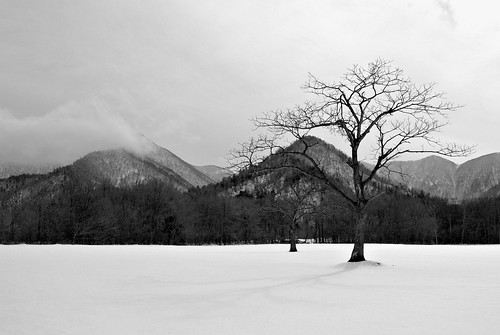
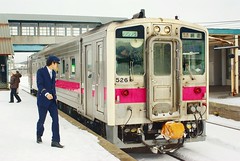

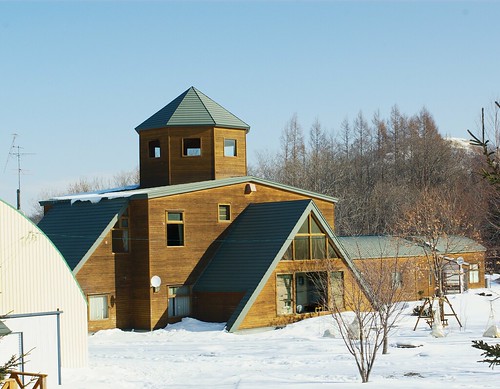



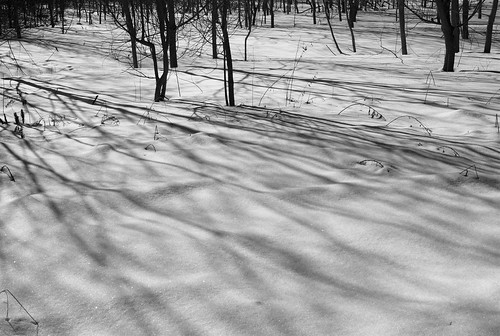
Some impressions as to why the apparent lack of flourishing tourism industry in Hokkaido:
ReplyDeleteAs to J.R.- cars have largely replaced all other forms of transportation in Hokkaido except in and between large centers, and tour buses.
As to closed up shops- some of it is seasonal, Hokkaido has a lot more tourism in the summer, except for a few major ski areas, and even skiing has been losing popularity among Japanese for quite awhile. The permanently closed ones have lost out to the tour companies, which run the buses and stop them at the omiyage shops and restaurants they own and operate themselves- or so I hear. Good for business, but not so good for the local economies I would guess.
Herr Morén -
ReplyDeleteFantastic detail with the flying geese above the lake shimmer.
Envy, I must remind myself, is a sin.
Correction to the earlier flying geese comment:
ReplyDeleteThe birds in the foreground are Whooping Swans (Ohakucho - Cygnus cygnus. It stands to reason that the flying birds are whooping swans too.
Anonymous: the point about tour buses only patronizing certain stores is well taken. And I speculated above that seasonal closures are common. However, I suspect that there's more to it than that. Most stores we saw did not seem to acknowledge the reality of tourism; work clothes and tractor parts rather than hiking gear and camera consumables.
ReplyDeleteI also don't really buy the car-only argument. Despite it being off season, every form of public transportation we took was filled to capacity and beyond. If you can't run a train or bus line when filled to capacity, you're not doing much of a job as a transport operator.
Tourism certainly seems to be flourishing in Hokkaido; it is the industry that is lacking.
MTC: the lake picture is just a matter of perseverance, not brilliance; pick an angle, then sit and wait until a few swans decide to fly over the right spot in the sky. I was lucky that they did before my tour companions got fed up waiting for me in the bus.
ReplyDeleteIt did turn out pretty good, though (well, 自画自賛 is part of this week's homework; I'm just practising).
I'm the anonymous at the top. Just a bit more commentary:
ReplyDeleteI'm not any kind of tourism expert, my comments are only based on speculating from what I have seen and heard living in Hokkaido. I first came almost 20 years ago. I have come and gone a few times, but have been living in a small Hokkaido town for the past eleven years.
One thing is that even over the past ten years, in my area (Tokachi) many of the roads have been upgraded and widened. We have also gotten our own segment of kousoku douro (expressway). On the two or three occasions I have had over the years to ride train or bus locally I have been alone or accompanied by one or two other passengers. Others tell me this is standard. Our local train line was finally given up on a couple years ago after many years of losing much money. As long as I have known it was only one car, but my wife says that years ago there were more, and that the train had many passengers. Local rail lines have been disappearing all over Hokkaido for years. The only people who use the bus these days are elderly farmers wives who never got a drivers license, and some high school students who go to school in neighboring towns.
Of course this is not a tourist area. But there has been a distinct pattern of change in transportation patterns in rural Hokkaido.
You say that all the forms of transportation you took were filled to capacity. I think that has mostly to do with the capacity being small and the usage rising and falling due to season and events. The problem with public transportation when it is underutilized is that you can't maintain capacity for peak demand and remain financially viable. With train there is even more overhead and maintaining service at all below a certain level of usage requires subsidizing.
As for the stores and such, I don't know. I have also often found myself wishing for a store or a restaurant where there were none to be found. I don't know if local entrepreneurship is lacking or if it is more the style of Japanese tourism. Again my speculation based on observation but it seems to me that there are two styles of tourist in Hokkaido. The ones who set their own itinerary are for the most part from Hokkaido, on day or perhaps overnight trips, by car. These are probably not enough in number, nor likely to spend money in big enough amounts to support an independent tourist industry. The rest are on packaged tours and are shuttled from airport to hotel to sightseeing spot and omiyage shops and so on, never setting foot in an independently run business during their entire stay.
Brian
P.S. Sorry if I am being overly argumentative. :-) I have a cold and lack the energy to properly edit my comments. The topic is an interesting one.
ReplyDeleteBrian
Don't worry; it's not argumentative at all.
ReplyDeleteI think you do hit on an important distinction: tourist area versus non-tourist area. A "normal" rural area is a rather different thing than a tourist magnet like Akan. That's what I was alluding to when I talked about JR and the local businesses seeing themselves as serving (or not) the local farming industry rather than tourism. That makes sense for areas like where you live; it makes less sense in tourist areas.
These things tend to be self-reinforcing too; if you can only come to an area by tour bus, and only buy lunch in tour-operator restaurants, then that's of course the only kind of visitor you'll have. And while I don't know about Hokkaido specifically, I suspect it is not unlike other places where a part of the population sees tourists as unwanted and unwelcome and welcomes anything that decreases the number of visits. Which is a legitimate, understandable standpoint; tourism _is_ disruptive after all. But then the consequence may well be a slide into irrelevance.